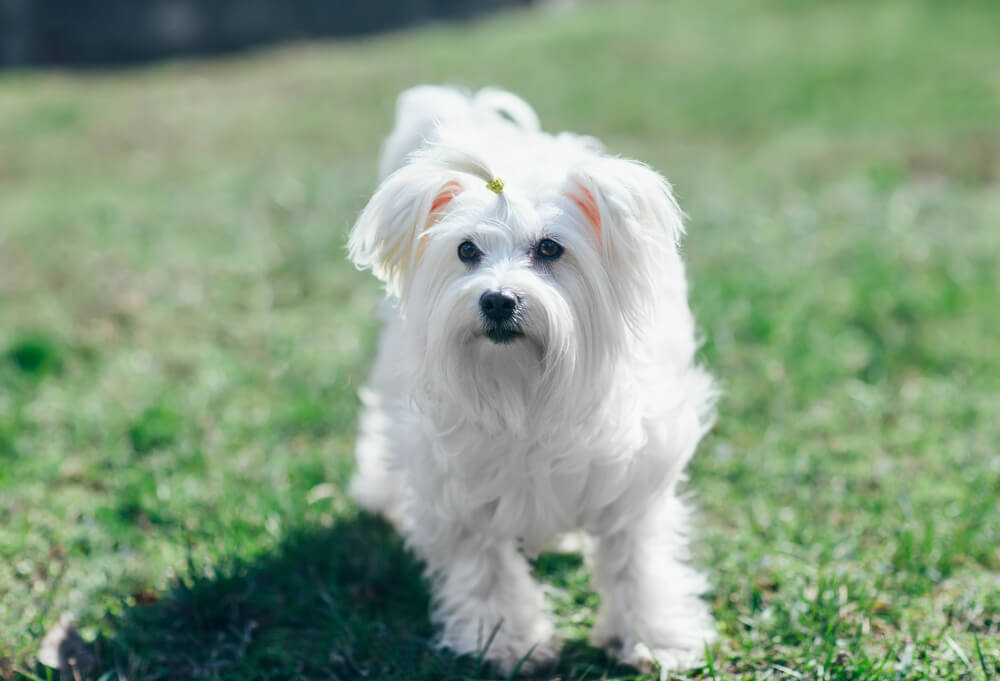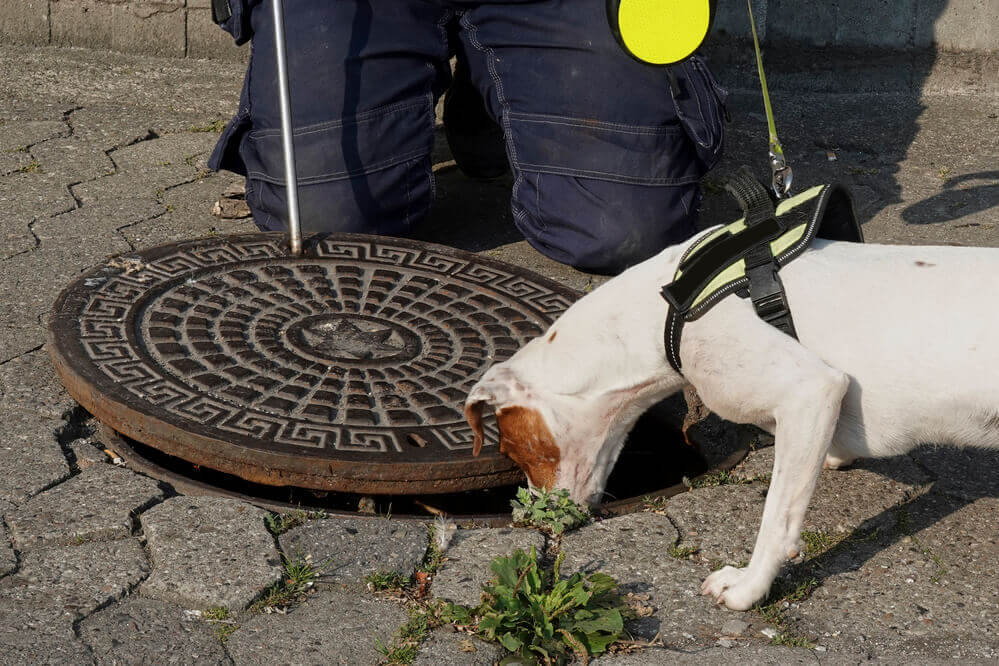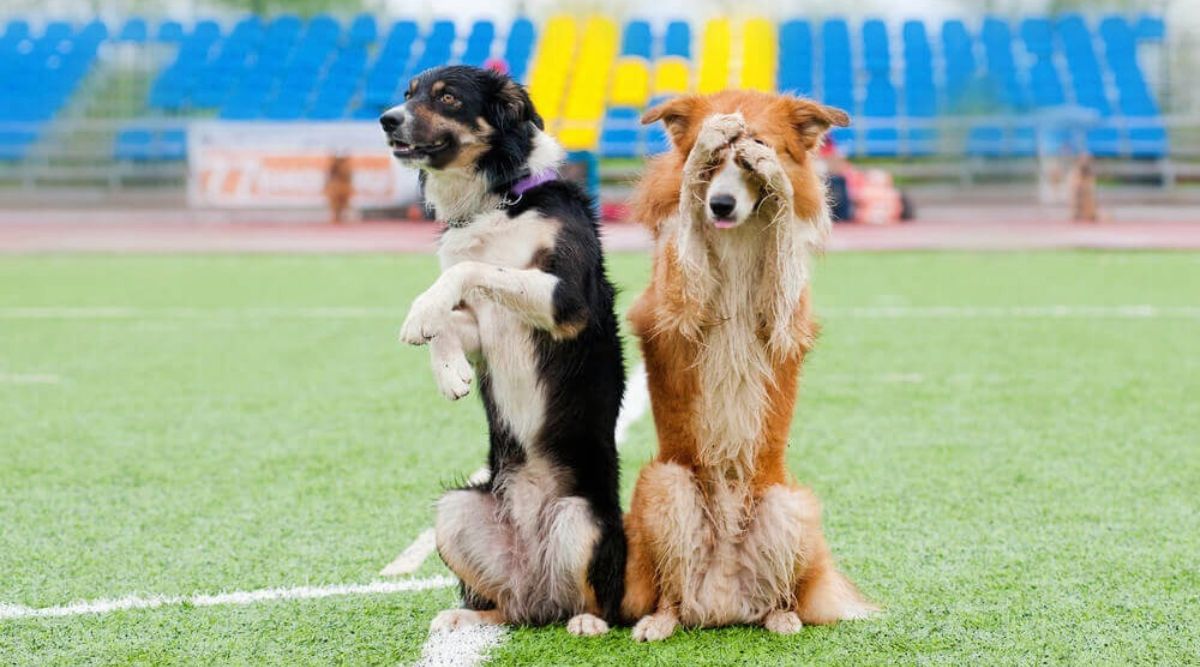If you are a pet parent, you may have heard something recently – as it’s a much buzzed about topic right now – about providing more enrichment for your pup. And you might be confused about just what that means, and why it’s something you should consider important.
Even if you have some knowledge of the subject, you might be wondering just how much your pup needs. For example, will a smaller dog need less enrichment than a bigger dog?
What is “Enrichment For Dogs” Anyways?
The first thing you need to understand is that enrichment for dogs in this sense has nothing to do with food! In fact, it has little to do with your dog’s physical needs at all.
The chances are good that you are great at taking care of your pup’s physical health.
Regular vet visits, daily walks and the best possible dog food for his needs are probably things you, as a pet parent, pay lots of attention to. But how much attention do you pay to your dog’s mental wellbeing?
No matter their breed, dogs are usually a lot smarter than we give them credit for. They need mental stimulation as much as humans do, or they are likely to become bored, or in some cases even depressed.
If that happens, it can lead to all kinds of problem behaviors, from things like destructive chewing and endless barking to lethargy and a withdrawal from their ‘family’ and more.
Canine enrichment provides pups with the mental stimulation they need to prevent such things and help them lead a happier, calmer existence in general.
Canine enrichment can take many forms (more on that later) but however it’s provided it is as important, vets and other canine experts say, as feeding your pup the right food and making sure he gets enough walks.
Do Small Dogs Need Less Enrichment?

Often, when it comes to their everyday physical needs, many small dogs have very different ones than their larger counterparts. They usually eat smaller quantities of food, and in many cases, though not all, they don’t need to be walked as often, or for as long.
But, given that they physically have smaller brains than their bigger friends, does that mean that they need less enrichment than larger dogs?
Canine enrichment experts say no, not necessarily. The amount of enrichment a pup needs to be happy – and to prevent unwanted behaviors – isn’t really related to brain size at all.
Instead, it’s often more about the pup’s breed characteristics, his age, his general activity levels and his individual personality (because as every dog parent knows, pups really all do have their own unique personalities).
It’s About Your Dog’s Genetics
Like a lot of their physical characteristics, how much, and what kind, of canine enrichment your pup needs will be shaped in large part by their genetic makeup.
While there are hundreds of dog breeds – as well as lots of lovable mutts – some canine experts claim that they can be divided into ten distinct genetic ‘groups’ that they might belong to, breaking down as follows:
- Natural
- Sight hound
- Guardian
- Toy dog
- Scent hound
- Gun dog
- Terrier
- Bull dog
- Herding
- Working dog
You probably know which group your pup belongs to (or if not, an at home canine genetic testing kit can tell you), but why does it matter anyway, if canine enrichment is nothing to do with your pup’s physical traits?
The answer is that their genetic grouping may influence the types of enrichment activities they respond best to, and enjoy most. A scent dog, for example, will often enjoy going on ‘hunt’ guided by their nose, while a working dog might enjoy ‘tasks’ that are more structured.
This is not an exact science, however, and your pup may enjoy something completely unexpected! Often it will take trial and error and experimentation before you discover what that might be.
The effort will be worth it however, especially if your pup already displays some of the problem behaviors usually linked to boredom and a lack of mental stimulation.
3 Fun Small Dog Enrichment Ideas (Without Food)
It’s one thing to know that your pup, whether he is a small dog or a larger pup, probably needs more enrichment, but knowing how best to engage his brain – and how often – is another matter.
You can’t, after all, really hand him a book to read or give him the Wi-Fi password, so he can browse the Internet, as you might for a human kid.
With this in mind, here is a look at three of the major types of canine enrichment activities you can consider for your dog.
Side By Side Team Building Activities

As much as your pup needs to be mentally stimulated, he also needs to feel like he is a part of your family team, so any ‘side by side’ activities he can participate in with you will allow him to do this.
The most obvious example here is a walk, and that’s something you do already, right?
However, in order for your pup to get the maximum mental stimulation from his walks, you need to do more than simply trail behind him at the end of his leash while you scroll through your cellphone.
For some pups, location can matter. If you can walk him somewhere where there are lots of sights and smells to explore with his senses – especially his sense of smell – and you can safely do so, go for it.
Finding such areas can be harder if you live in an urban area, but many dog parks are specifically set up to allow for this kind of mental stimulation as well as physical exercise.
Your involvement in the walk matters a lot. Something as simple as tossing a ball around at some point on the walk can be helpful, and off leash time – if it is allowed, as many non dog specific parks do have rules against this so make sure you check – is great too. But even talking and engaging with your pup is better than nothing!
Playful Activities
You may think of a game of tug with a rope, or fetch with a ball, as a physical exercise for your pup, but if you remain involved it can provide lots of mental stimulation too.
Reward your pup when he ‘wins’ in a game of tug, or when he retrieves a ball that has been thrown for him, both with a tasty treat and verbal praise.
And always end the session on a high note, with pets and praise.
Trick Training

Trick training is a canine enrichment activity that you can try with any pup, but it works best for certain genetic dog groups such as herders and working dogs who are genetically predisposed to learning and retaining instructions.
Most dogs however will enjoy trick training, and they are actually never too old to learn (yes, old dogs can learn new tricks) as this video demonstrates (there are some great ideas for trick training here too.)
Keep Up With Dog Enrichment for the Best Results
However you choose to provide enrichment for your dog, it’s important that you do so consistently, and you ensure that they really are enjoying themselves. Try to set a goal of three fifteen-minute enrichment sessions a day and remain as consistent as you can.
Unless you and your pup live alone, make sure that all the members of the household get involved – which will take some of the pressure off you time wise too – and most importantly, keep things fun.
If your pup is not enjoying playing with a certain toy, or seems stressed out trying to learn a trick, go on to something else.
Other great pet reads you’ll enjoy:
10 Homemade Interactive Dog Toys Your Pup Will Love
Best 6 Small Breed Dog Food for Small Dogs (Dry & Canned)


